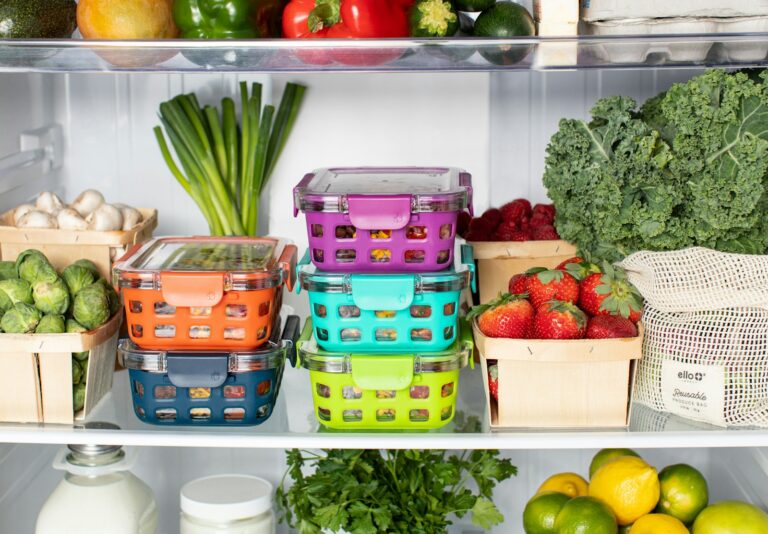If you’re a mom, you know the drill: the chores never end, the clock’s always ticking, and somehow the mess keeps coming back. Between shuttling kids, work, and the million other things, keeping the house under control can feel pretty hopeless. But a simple, realistic chore system can actually make life a little less wild—without making you feel busier than ever.
Most moms feel buried by their to-do lists that just seem to multiply. But here’s the thing: you don’t need a color-coded calendar or a fancy app to make headway. A down-to-earth approach to chores can help you keep your sanity and your house running.
Honestly, those complicated systems rarely stick. The best chore routines are team efforts that only take a few minutes a day but still keep things in order. When everyone pitches in, you get back some precious time—and a little peace.
The Core Principles Of The No-Overwhelm Chore System
Why does this system work? It’s built around simple ideas that fit real family life. It balances what needs to get done with ways to stay connected, without turning your home into another stress source.
Designed For Busy Moms
This system gets that your time and energy are limited. Forget those elaborate charts that just gather dust after a week. This is about what fits into your actual day-to-day life.
Try a daily 20-minute family clean-up that fits your family’s routine. It’s surprising how much you can get done in a short burst.
Batch similar chores together—like doing all the laundry on one day—instead of scattering them across the week. It’s less mental juggling.
If you can, lean on smart home gadgets for stuff like vacuuming or bill paying. Even grocery delivery can be a game changer.
And honestly? Don’t stress about perfection. The goal is progress, not a spotless, Instagram-worthy house.
Promoting Connection And Accountability
Chores don’t have to be a battle. This approach turns them into teamwork. When everyone helps, the house feels like a shared space, not just mom’s responsibility.
Make a family chore chart and put it somewhere obvious—most folks use the fridge.
Age-appropriate chores help kids learn real-life skills and lighten your load. Even little ones can:
- Put away toys
- Sort laundry
- Feed pets
- Wipe tables
Teens? Let them manage a weekly chore chart for younger siblings. It’s good for their leadership (and your sanity).
Make chore time less dull—chat while you work, or blast some music to keep everyone moving.
Preventing Clutter And Burnout
This system is all about dodging two big headaches: clutter and burnout.
The one-touch rule is a lifesaver. When you pick something up, put it away for good—don’t make “deal with it later” piles.
Keep some breathing room in your day. Try to leave about 15% of your schedule open, so you’re not always scrambling.
Rotate out-of-season stuff in and out of storage. Less clutter means less to deal with.
Set up simple routines that eventually run on autopilot. Habits take less brain power than decisions.
And honestly, an imperfect system you actually use is way better than a perfect one you quit. Start with just one or two changes, then build from there.
Implementing The Chore System In Real-Life
Making your chore system work at home takes a bit of trial and error. But with the right tweaks, it can become something the whole family just does—without constant nagging.
Tailoring Chores To Your Family’s Needs
Every family’s different. Think about what matters most in your house. Maybe it’s the kitchen, maybe it’s the bedrooms.
A chore rotation system helps spread out the work. Write down all the chores and how often they need to get done:
Daily chores:
- Dishes
- Quick kitchen cleanup
- Making beds
Weekly chores:
- Vacuuming
- Bathroom cleaning
- Laundry
If something’s not working, tweak it. The system should fit your family—not the other way around. Lots of moms say that having clear goals for their chore routine keeps everyone focused.
Teaching Responsibility To Children
Chores teach kids real-life skills, and it’s good to start early.
For ages 3-5:
- Put away toys
- Help set the table
- Feed pets
Ages 6-9:
- Make beds
- Empty little trash cans
- Simple food prep
Older kids (10-13) can handle things like cleaning bathrooms and doing laundry.
Positive reinforcement works way better than nagging or punishment. Try sticker charts, tokens, or a little allowance for finished tasks. You can even make it part of their homeschool routine.
Teaching takes patience. Show them how, walk through it together, then let them try. The way you teach will shape how they feel about helping at home.
Sustaining Success For Moms
Keeping a chore system going long-term means mixing in some self-kindness and finding support. When you put self-care into your routines, the system just works better.
Building Confidence And Self-Care Into Routines
Give yourself credit for small wins. Got the dishes done before bed? That’s a win. Self-care isn’t separate from chores—it’s part of the deal.
Some ways to keep your confidence up:
- Take 10-minute breaks between chores
- Be realistic about what you can do
- Say “no” to stuff that drains you
- Use some positive self-talk when you finish a task
Self-care doesn’t look the same for everyone. Maybe it’s a quick cup of coffee after folding laundry, or maybe it’s a whole evening off. Just make sure it’s something you actually do.
When you look after yourself, you show your family that your needs matter too.
Celebrating Progress With Supportive Resources
Support makes sticking with your chore system a lot easier. The Real Happy Mom podcast has down-to-earth tips for moms dealing with the daily grind.
Find other moms who get it:
| Connection Type | Benefits |
|---|---|
| Online communities | Quick advice, 24/7 support |
| Local mom groups | In-person encouragement |
| Family check-ins | Shared responsibility |
Take pics of finished projects or neat spaces. Some moms use habit tracker apps to see how far they’ve come.
A sustainable chore system isn’t about being complicated. The best ones bend as your life changes, instead of making you stick to a rigid plan that just doesn’t work.
Frequently Asked Questions
Managing chores takes some planning, but it’s doable. Here are answers to some common questions about keeping up with housework as a family.
What are the steps to creating a manageable chore schedule for a busy mom?
Jot down all the chores you need to tackle. Sort them into daily, weekly, and monthly jobs based on what can’t wait and what can.
Be honest about your time. A household chores checklist for adults can help you see what really needs doing.
Think about your energy levels. Do tougher chores when you’re at your best, and save the easy stuff for when you’re tired.
Get the family involved—kids can do more than you might think, even if it’s just picking up toys or setting the table.
Don’t forget to use reminders or a chore app to keep things on track.
How can a chore chart help adults with ADHD stay organized?
A chore chart gives you a visual plan and breaks down everything into smaller, less overwhelming steps. That’s huge for adults with ADHD.
Try color-coding: blue for bathrooms, green for kitchen, yellow for outdoors—whatever makes sense to you.
Chore charts for adults can help build routines, which really helps if time management is tricky.
Keep the chart somewhere you’ll see it, like the fridge or by your desk. Out of sight, out of mind, right?
A little reward for finishing chores can boost motivation, too.
What are essential components to include in a chore auditing worksheet?
List all your chores by type—cleaning, maintenance, outdoor, and so on—with space to note how often they need doing.
Add a column to estimate how long each task actually takes (it’s often less than you think).
Rate how tough each job feels (1-5) so you know which ones to tackle first or hand off.
Jot down how each chore makes you feel. Some tasks are just more stressful than others.
Mark which jobs could be delegated or maybe even outsourced.
How can a chore spreadsheet template simplify household task management?
A spreadsheet lets you sort and filter chores by things like time, frequency, or who’s in charge.
Chore charts get way easier to update as your family’s needs change.
Calendar views help you see when things need doing, so nothing gets missed.
Conditional formatting can highlight overdue chores or remind you about regular maintenance.
Most templates come with printable versions, so you can hang them up where everyone can see.
What are some effective strategies for assigning day-of-the-week chores to family members?
Match chores to people’s routines. Early risers get morning jobs, night owls handle evening stuff.
Rotate chores each week so nobody gets bored and everyone learns new skills.
Pair boring chores with fun ones to keep motivation up.
Try a family chore system that makes tasks more engaging.
Use daily themes like “Laundry Monday” or “Bathroom Tuesday” so everyone knows what’s coming up.
Can you recommend a comprehensive list of household chores to ensure nothing is overlooked?
For daily stuff, think simple: make the beds, wash the dishes, wipe down the counters, sort the mail, and do a quick 10-minute pickup in the busiest spots. It’s the little things that keep chaos at bay.
Weekly, it’s time for the bigger hitters—vacuum, mop, swap out bed linens, tackle the bathrooms, dust the surfaces, and take out the trash and recycling. Not exactly thrilling, but it keeps things livable.
Once a month, give some attention to cleaning appliances, washing windows, organizing a small area (the junk drawer, maybe?), and checking smoke detectors. It sounds like a lot, but spreading it out helps.
Seasonal chores sneak up on you—clean the gutters, get the HVAC serviced, rotate your clothes for the weather, deep clean the carpets, and check those weather seals before the next big temperature swing.
Oh, and those sneaky maintenance jobs: change air filters, descale the coffee maker, clear out the dryer vent, and, if you’re feeling responsible, update your home inventory for insurance. Not glamorous, but future-you will thank you.




